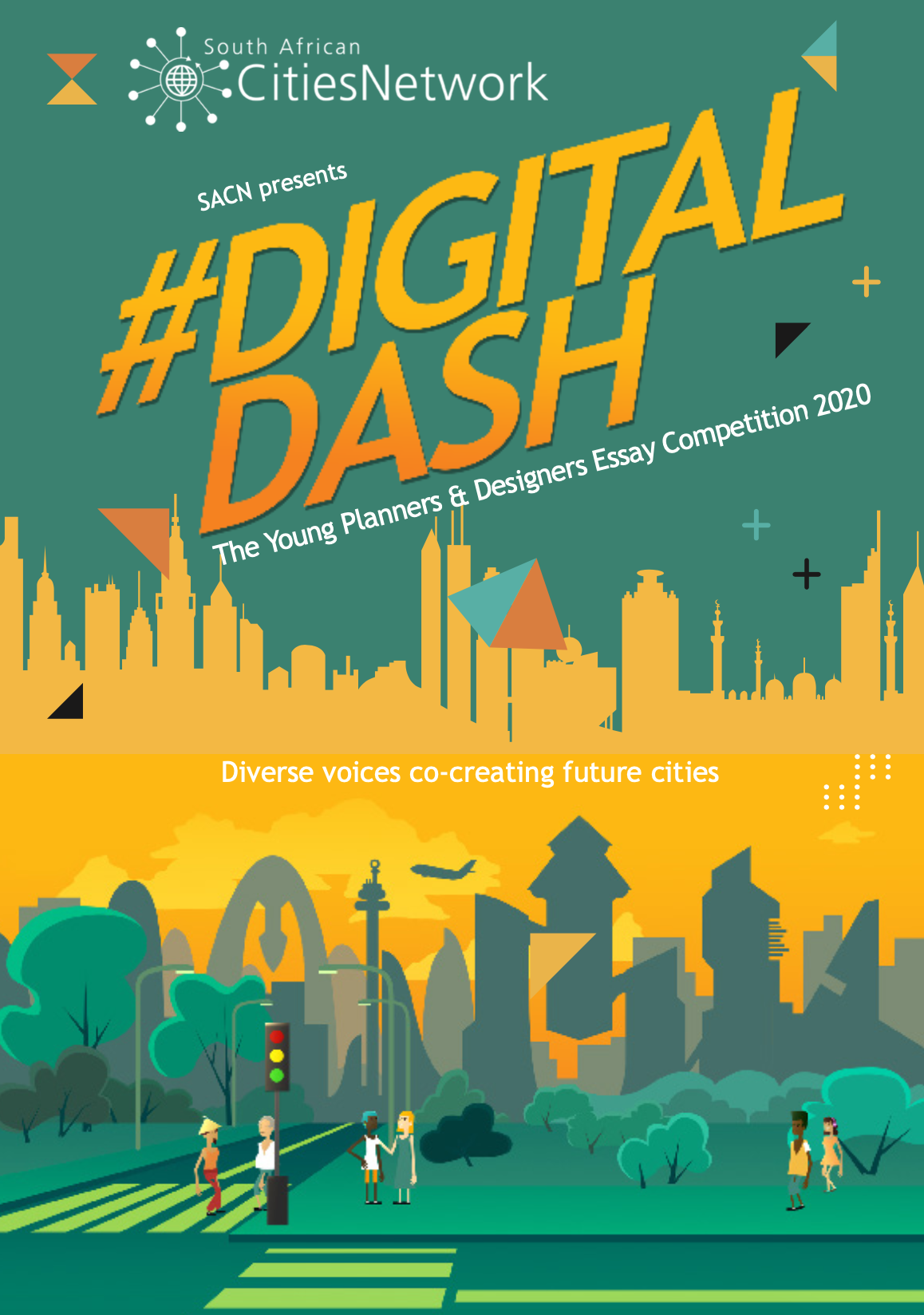DigitalDash
Young Planners & Designers Essay Competition 2020 Publication

30 April 2021
Siphelele Ngobese, Tlholohelo Mokgere
English
Report
Africa
Welcome to the SACN #DigitalDash, a profile of entries from the 2020 Young Planners and Designers Competition.
Young people between the ages of 15-35, many of whom live in cities, make up over 35% of South Africa’s population. Moreover, youth account for over 60% of the country’s total unemployment, a significant proportion of which are graduates. Statistics also show that young people are both the main victims and perpetrators of crime and violence. This data was gathered before Covid-19 befell the globe, and realities for young people have since only grown grimmer. At the same time, young people individually or in organised and semi-organised structures, are actively involved in innovation and solutions to problems in their communities. While they face multiple exclusions and often feel unheard, youth exercise their voice on a range of important discussions like climate change, politics, technology, governance, and the economy.
City officials and practitioners such as planners, designers, architects, technical experts, consultants, and policy makers have a critical role to play in responding to the myriad of challenges facing cities. However significant shifts are happening in these sectors that call for collaboration, partnership, and co-creation with all of society. It is essential that young people are also included in key processes within formal institutions. This is not only because they are a marginalised but rapidly growing proportion of the urban population in South Africa and elsewhere on the Continent; but also, in recognition of the fact that they are the driving force for development – the future leaders, innovators, and peacebuilders. Therefore, because cities are deemed the best chance of achieving sustainable development and more equal societies; youth should be central actors.
It is not enough that the potentials of youth are recognised and acknowledged; young people need to be empowered with the knowledge and skills that unlock their full potentials and enable them to be contributors to the growth of their cities and society at large. Platforms must be provided where the voices of youth can be heard and influence decision-making. Young people must be meaningfully included in governance and technical processes. As co-creators, they should have a role in the entirety of development processes: from knowledge generation, conceptualisation through to the implementation and assessment of outcomes.
This very publication and all accompanying digital outputs were developed by a team of young creatives. The content is a collation of submissions by young scholars and professionals in urban planning, design, and other disciplines in the development space, sharing their visions and ideas for achieving more inclusive cities. All this demonstrates that youth are (despite many perceptions to the contrary) capable, knowledgeable, actively engaged and innovating towards sustainable and inclusive cities. They are eager to change cities and institutions for the better and are at the forefront of this change.
The Competition is a platform of the SACN, and one of various contributions to amplifying youth voice and improving the quality of youth participation in shaping the cities and governments of the future. Submissions ranged from those challenging the continued apartheidesque management of public spaces to urging for modern, adaptable townships that support informal livelihood strategies through inclusive spatial design and technology. Others shared creative approaches to enhancing civic engagement, while some critiqued planning systems and institutional cultures that are inherently elitist, development that is resource intensive and perpetuates gatekeeping around the direction of development and its beneficiaries. As a young planning practitioner tasked with leading this project, it has been incredibly exciting to engage with what is possible when we listen with intent, support and give space to young people’s ideas.



Comments